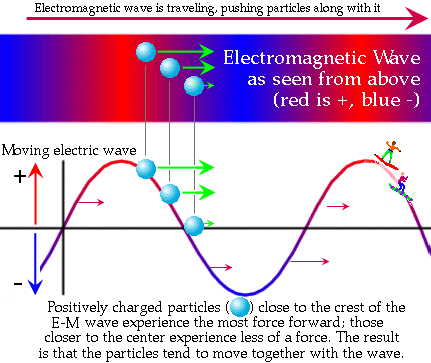

 |
 |
|
How Do We Experiment with Tiny Particles? Accelerating Particles It is fairly easy to obtain particles. Physicists get electrons by heating metals; they get protons by robbing hydrogen of its electron; etc. Accelerators speed up charged particles by creating large electric fields which attract or repel the particles. This field is then moved down the accelerator, "pushing" the particles along.

In a linear accelerator the field is due to traveling electromagnetic (E-M) waves. When an E-M wave hits a bunch of particles, those in the back get the biggest boost, while those in the front get less of a boost. In this fashion, the particles "ride" the front of the E-M wave like a bunch of surfers. The next page shows this process in an easier to understand animation. |